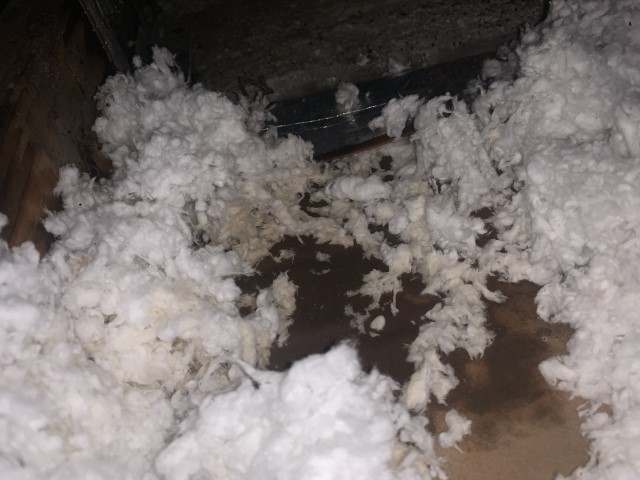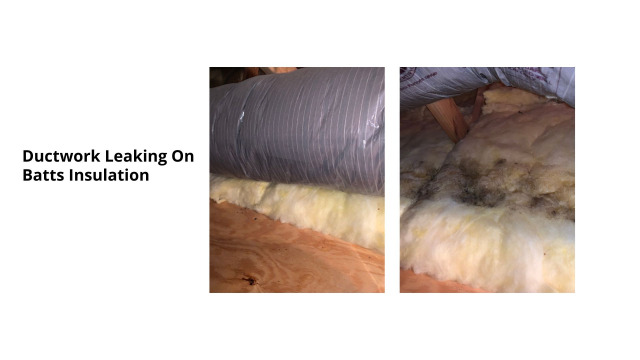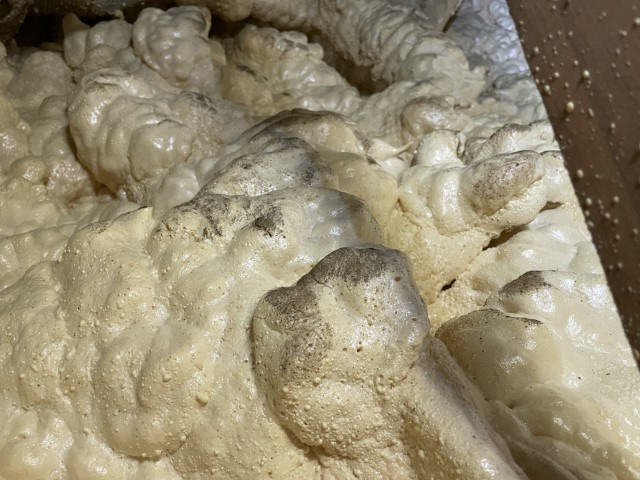Professional Mold Remediation Services
Don't Let Toxic Mold Put Your Family's Health at Risk
Stop mold damage before it spreads. Call now for a free, no-obligation estimate from a local remediation expert.
Free Estimate · Zero Obligation · Available 24/7
Mold on Attic Insulation - You have Been Warned
Mold on attic insulation is something that is not talked about often.
The reason why?
Nobody casually just goes into the attic of their home.
Mold can grow on attic insulation if it’s been wet. While insulation is not typically organic material it may be laid on paper products that can produce black mold.
The rafters of your home can be a breeding ground for microbial growth considering you have two well-known building systems that can leak up there:
- The roof
- The HVAC air handler and/or ductwork
If you add warm and humid air to the mix, a moisture problem is not out of the equation.
So let’s explore everything you need to know about moldy attic insulation and I will also reveal a situation I had during a mold assessment that caused a real nuisance for one of my clients.
In this article we will go over:
- What kinds of attic insulation mold grows on
- What Causes Attic Mold Growth
- How To Remove Moldy Attic Insulation
- How to Prevent Mold from growing on attic insulation
What Type Of Insulation Mold Grows On
There are multiple types of insulation that is common in attic spaces.
The three most common types are:
Batts:
Batts insulation is the most common type of insulation found in attics. It’s either constructed of fiberglass or mineral roll (more often fiberglass). It looks fluffy like a pillow, but trust me when I say that you do not want to touch the fiberglass if you can avoid it! It will make you itchy and it can hurt your skin. The fiberglass is typically glued to a sheet of paper.
And that’s what the big problem with batts insulation is.
**You see: **
Fiberglass insulation is non-organic so mold will not use it as a food source. Mold can still grow on the surface of the fiberglass it just won’t colonize and off-gas like other materials such as drywall. Mold spores can grow and thrive on the cellulose-based paper material on the back of the fiberglass.
Blown-In Insulation
Blown-in insulation is tiny pieces of material that is distributed throughout an attic space. There are different types of materials that can be used for blown-in insulation and that is the deciding factor on whether or not mold growth will occur on it.
There are loose-fill fiberglass and cellulose-based.
As we learned above. Fiberglass isn’t organic so therefore it will not support active mold growth. Cellulose-based blown-in insulation on the other hand is made of recycled paper materials and absolutely can support mold growth.

Foam
Foam insulation is not laid or blown in on the backside of the ceiling like the other two types of insulation. It is installed along the roof line. The soffit vents are sealed. It prevents humidity from infiltrating the attic space.
Foam insulation is composed of polyurethane which is technically organic however there are many different types of polyurethane so the manufacturer should be consulted because there are chemicals used. Mold will grow on the surface of the foam if it’s exposed to high humidity.
What Causes Mold Growth On Insulation
Just as with any other type of building material, attic mold growth is caused by water damage. The water damage can be in the form of a leak or humidity.
Many things can go wrong in an attic including:
Roof Leaks
This is the most obvious because when water comes through the roof, it has nowhere to go but down on the insulation. There are many different areas where roof leaks can occur including ridge vents, attic plumbing stacks, dryer vents, bathroom fans, roof valleys, and around kitchen exhaust fans exiting the attic.
Now with foam, it’s a little bit different because it is installed along the roof line and the leak may not manifest itself for a while. Because you have the foam covering the roof sheathing, it can hide the damage.
But with batts and blown-in insulation, roof leaks can get it extremely wet. And while mold won’t grow on the fiberglass typically, the paper used or cellulose loose-fill can lead to a mold problem.
HVAC System
There are multiple components of an HVAC system that may be in your attic and can lead to mold spores. The most common parts of an HVAC system that can leak are:
- The Air handler
- The condensate line
- The ductwork
Every home is different and you may not have actually any of these different parts of an air conditioning system in the attic, but if you do, it can cause lots of problems. This is especially true in the summer months, and here’s why…
The attic gets extremely hot but the air being pushed through the ductwork is extremely cold. If there is an issue with the outside insulation of the ductwork where there is some kind of air leakage, the ductwork can start sweating causing condensation on the attic insulation. Once the condensation starts, mold growth will begin to form.
As a licensed mold assessor, there is one condition that I deal with very frequently in attics. And that is the ductwork is not raised.
!!!! ### Client Story
!!!! I once had a client that had ductwork laying directly on the batts fiberglass insulation throughout the entire attic and just about everywhere that I picked up the ductwork, there was mold not only on the insulation but also on the ceiling. Attic mold removal on the insulation had to be completed throughout the entire attic space. On top of the ducts needing to be raised, it was also determined by a contractor that the attic had improper ventilation. This was a disaster for my client to not only resolve the attic mold issue but it also affected the indoor air quality in the home.
!!!!
!!!!Here is the picture:
!!!! 
Humidity
Humidity is the main factor in significant mold growth on foam insulation. Because sealed-up attics are not designed to get as humid as unsealed attics, the excess humidity will lead to condensation on the foam material leading to mold growth.
If you add in any air supply that is installed in the attic, it can be a recipe for disaster by adding cold air to a closed-in humid environment.
How To Remove Moldy Attic Insulation
Often times I go into a home that has a musty odor and I can tell right away…
The batts insulation in the attic is wet.
Water-damaged insulation has a distinct odor that can be different than other building supplies such as drywall or wood.
Removing the insulation is not always as simple as just bringing the insulation down and discarding it, especially loose-fill insulation because there are so many small pieces.
Removal techniques vary depending on what type of insulation is present.
But here is the most important thing:
The insulation must be bagged in the attic with the scuttle hole sealed.
You don’t want a situation where the mold spores in the attic cross-contaminate the living space of the home.
The goal is to remove attic mold, but safety is crucial. If this work is completed in the summer months you can bet that the attic will be well over 100 Degrees Fahrenheit. And if you have never spent time in an attic, you must be aware that the drywall should not be stepped on and only the structural wood including the roof sheathing.
Mold remediation from foam insulation can be quite challenging as certain chemicals may not be able to be used on the polyurethane surface and others may not penetrate the material to properly remove the attic mold. The foam insulation will likely need to be removed from the roof sheathing altogether.

It is best to leave the attic to a mold removal company. Removing attic mold and water-damaged insulation can be very difficult and is not considered a DIY project.
How To Prevent Mold On Attic Insulation
In order to prevent attic mold on insulation, it all comes down to controlling moisture. Here are a few easy steps to prevent mold growth on attic insulation.
-
Visually inspect the attic every 6 months- Roof leaks are a gradual progression most of the time. If you see any staining on the roof sheathing, call a roofing contractor right away.
-
Ensure the HVAC ducts are strapped to the trusses- As stated earlier, ductwork laying on the insulation can lead to mold growth. By hanging the ducts at least 16 inches above the insulation you can ensure it doesn’t cause damage to the insulation.
-
Have the HVAC drain line cleaned out periodically- If your HVAC system is in the attic, it may be a smart move to have the drain line cleaned out every so often. This will prevent big leaks that can occur in the attic.
Explore Related Topics:
Notice an update we should make?
We strive for accuracy. Contact us here if you see incorrect or outdated info on this page.

